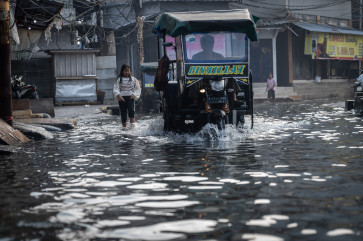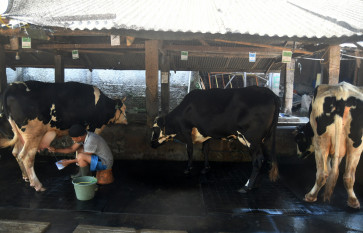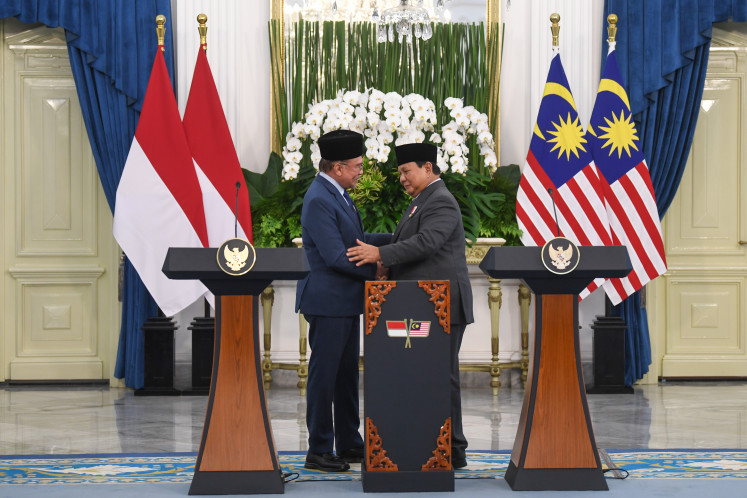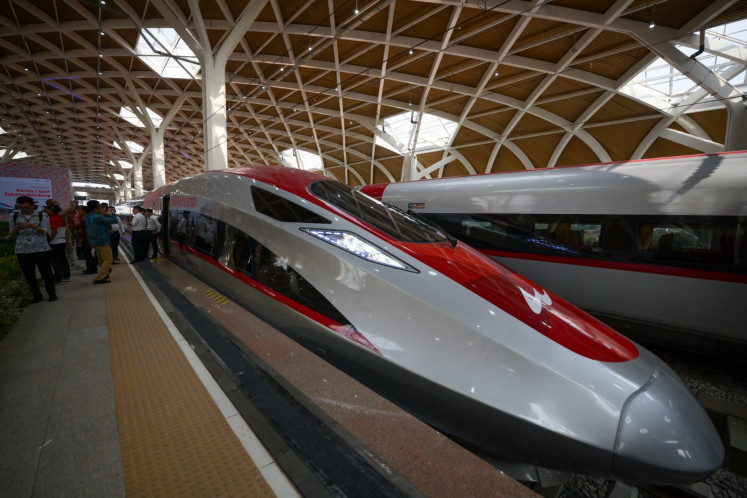Popular Reads
Top Results
Can't find what you're looking for?
View all search resultsPopular Reads
Top Results
Can't find what you're looking for?
View all search resultsCan science and technology parks boost the economy?
Indonesia is developing 100 science and techno parks (STPs) as part of efforts to support the governmentâs nine-priority agenda or Nawacita
Change text size
Gift Premium Articles
to Anyone

I
ndonesia is developing 100 science and techno parks (STPs) as part of efforts to support the government's nine-priority agenda or Nawacita. The technology parks are also expected to connect academics, small- and medium-size enterprises (SMEs) and business and government.
As of 2013, four parks have operated ' the Indonesian Research Center for Science and Technology (Puspiptek), Bandung Techno Park, Solo Techno Park and Cikarang Techno Park. Being developed are the Batam Technopark and Palembang Technopark.
The STPs were built by local governments (in Surakarta and Batam), universities (Bandung and Surakarta) and the business sector (Cikarang).
How can we utilize the regional economy, local research bases and local partnerships with public and private stakeholders to make the parks successful and sustainable?
The EU has studied four STPs well known for their success, namely the Sophia Antipolis Technopole, Research Triangle Park and two Cambridge science parks (Cambridge Science Park and St John's Innovation Park). The study found essential components in the planning and development of the STPs venture.
First, setting out the strategy and objectives of a park and deciding the best model for implementation. STPs concern places, complex processes and diverse relationships that any founder must understand and manage well.
Second, engagement of the knowledge base. An active, effective and multi-dimensional relationship with universities or other public sector research organization is crucial.
It usually works best when the university sector has a remit to transfer knowledge and technology to the industry sector.
Third, interaction with the public sector at local or regional, national and European level. STPs are not stand-alone organizations. They are closely connected with the development of the innovation ecosystem.
Fourth, securing the land, capital and revenue to establish the STP and ensure its on-going growth is often a critical and time-consuming stage. STPs should not lose sight of their objective to create a working environment that stimulates innovation and knowledge-based business growth.
Fifth, assessing the nature of the local skill base. STPs need to address any weaknesses in entrepreneurship-level or technology-SME management skills.
Sixth, addressing the availability of regional and national markets or corporate supply chains. The weaker any of these markets, the greater and more imaginative the efforts of the STP management need to be in order to increase demand through processes such as business incubation, SME growth programs, new finance offerings for the development of technology-based businesses, etc.
Seventh, selecting the right package of services to deliver to tenant companies and businesses in a wider economy. STPs need to analyze the local innovation ecosystem to identify weaknesses by working with local partners or creating added value professional services and property offerings.
Eighth, determining the appropriate science park model. Most STP stakeholders require STPs to achieve financial sustainability within a reasonable period of time. However, this can involve grants and subsidies to allow time for viability while pursuing economic development goals.
Ninth, selecting strong leadership based on a board/committee structure that has good connections with the local economy (private and public) and a CEO with appropriate sector experience and strong leadership and management skills.
All the findings constitute the early 21st century model of STPs that founders and owners are increasingly adopting.
Such STPs are an integral part of the local innovation ecosystem, understanding and working with it and also designing and delivering programs that reduce weaknesses in the ecosystem.
STPs may also create collaborative spaces to bring innovation actors together and host the programs of other actors as a means to increase the visibility of the entire innovation ecosystem.
STPs must balance the need for short-term financial returns to secure sustainability against the opportunity to accelerate innovation-led business and economic growth.
Where the public sector is involved in an STP, the subsidies and grants they provide serve as 'patient money' that allows the STP time to secure its economic development objectives and financial sustainability.
Engagement with the private sector to secure capital for development as the park proves STPs can attract inward investment (both national and international) and stimulate new innovation-led business activity in other ways, often involving partners in the process.
Where the demand from new technology businesses in a locality is already strong, the private sector may well take the initiative alone to create an STP.
The question is whether the Indonesian government has set out the right strategy and objectives and made the right decision on the best model for implementation of the STPs.
Science and technology parks should be managed by professionals, with close linkage among sectors involved in research, business, government and the local community.
The characteristics of the local economy, the local research base and the degree of local partnerships among public and private stakeholders would determine their success.
Human resources are extremely essential, especially youth. An STP's networking and programs are an important part of achieving sustainability by differentiating itself in the property market to attract and hold its client base.
In Indonesia, one of the most biodiverse countries in the world, biodiversity should be the core of the new bioeconomy.
Development of 65 STPs is expected to be completed this year, with the remaining 35 in 2016. Only if all actors of innovation, academics, business, the government and community work together can we expect the techno parks to boost the national economy through the development and application of science and technology.
___________________
The writer, who holds a PhD in biochemistry, cellular and molecular biology from the University of Tennessee, Knoxville, US, is a researcher and adviser to the chairman of the Agency for the Assessment and Application of Technology (BPPT). The views expressed are her own.









